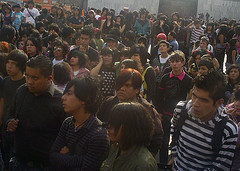 The November issue of The Atlantic has an article by psychologist Paul Bloom called, ‘First Person Plural.’ In the piece Bloom explores a number of new ideas about ‘the self.’ He writes, “An evolving approach to the science of pleasure suggests that each of us contains multiple selves—all with different desires, and all fighting for control. If this is right, the pursuit of happiness becomes even trickier. Can one self bind another self if the two want different things? Are you always better off when a Good Self wins? And should outsiders, such as employers and policy makers, get into the fray?”
The November issue of The Atlantic has an article by psychologist Paul Bloom called, ‘First Person Plural.’ In the piece Bloom explores a number of new ideas about ‘the self.’ He writes, “An evolving approach to the science of pleasure suggests that each of us contains multiple selves—all with different desires, and all fighting for control. If this is right, the pursuit of happiness becomes even trickier. Can one self bind another self if the two want different things? Are you always better off when a Good Self wins? And should outsiders, such as employers and policy makers, get into the fray?”
In the piece Bloom draws upon work by sociologist Sherry Turkle about online avatars:
Sometimes we get pleasure from sampling alternative selves. Again, you can see the phenomenon in young children, who get a kick out of temporarily adopting the identity of a soldier or a lion. Adults get the same sort of kick; exploring alternative identities seems to be what the Internet was invented for. The sociologist Sherry Turkle has found that people commonly create avatars so as to explore their options in a relatively safe environment. She describes how one 16-year-old girl with an abusive father tried out multiple characters online—a 16-year-old boy, a stronger, more assertive girl—to try to work out what to do in the real world. But often the shift in identity is purely for pleasure. A man can have an alternate identity as a woman; a heterosexual can explore homosexuality; a shy person can try being the life of the party.
Read the full story.




 The Houston Chronicle
The Houston Chronicle